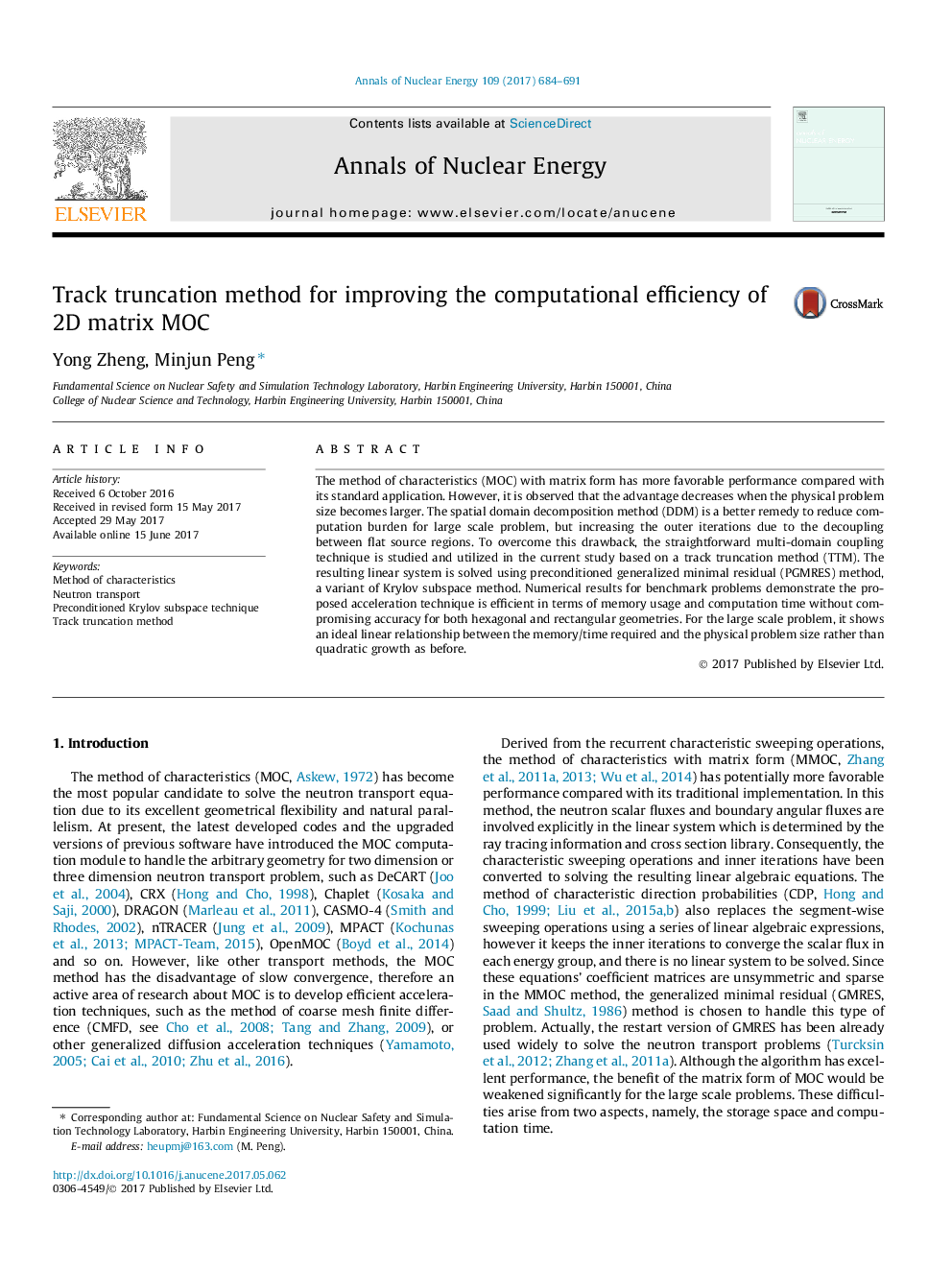| Article ID | Journal | Published Year | Pages | File Type |
|---|---|---|---|---|
| 5475090 | Annals of Nuclear Energy | 2017 | 8 Pages |
â¢The track truncation method has been studied and utilized in the current paper.â¢The 2D HTTR and C5G7 problems were simulated to evaluate the proposed technique.â¢The track truncation method can reduce the memory usage and run time significantly.â¢It allows the computation requirement to scale linearly with the problem size.
The method of characteristics (MOC) with matrix form has more favorable performance compared with its standard application. However, it is observed that the advantage decreases when the physical problem size becomes larger. The spatial domain decomposition method (DDM) is a better remedy to reduce computation burden for large scale problem, but increasing the outer iterations due to the decoupling between flat source regions. To overcome this drawback, the straightforward multi-domain coupling technique is studied and utilized in the current study based on a track truncation method (TTM). The resulting linear system is solved using preconditioned generalized minimal residual (PGMRES) method, a variant of Krylov subspace method. Numerical results for benchmark problems demonstrate the proposed acceleration technique is efficient in terms of memory usage and computation time without compromising accuracy for both hexagonal and rectangular geometries. For the large scale problem, it shows an ideal linear relationship between the memory/time required and the physical problem size rather than quadratic growth as before.
